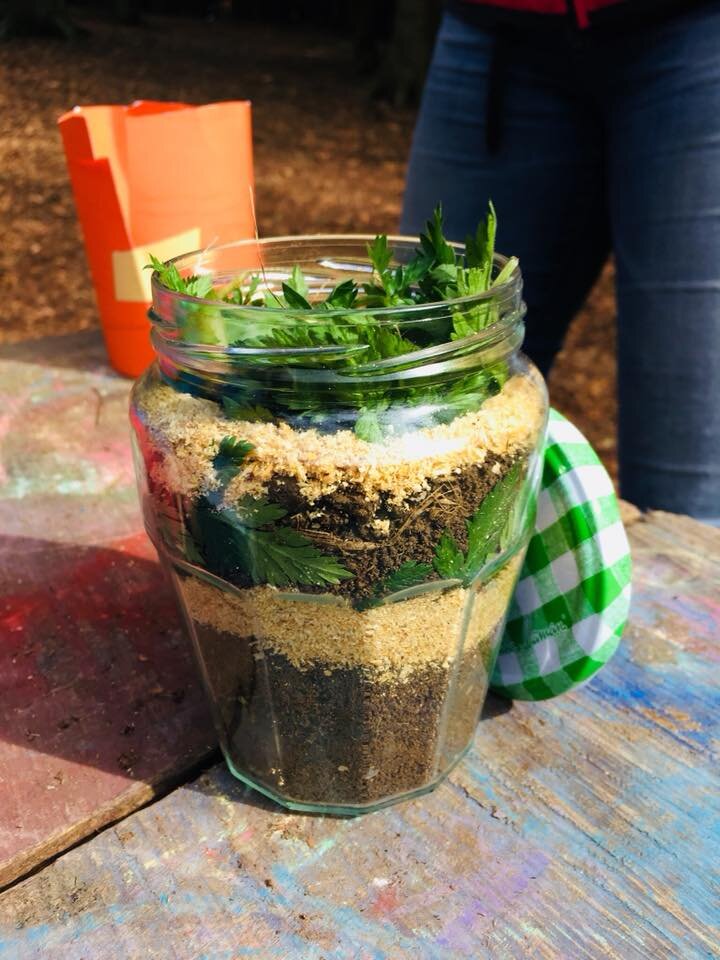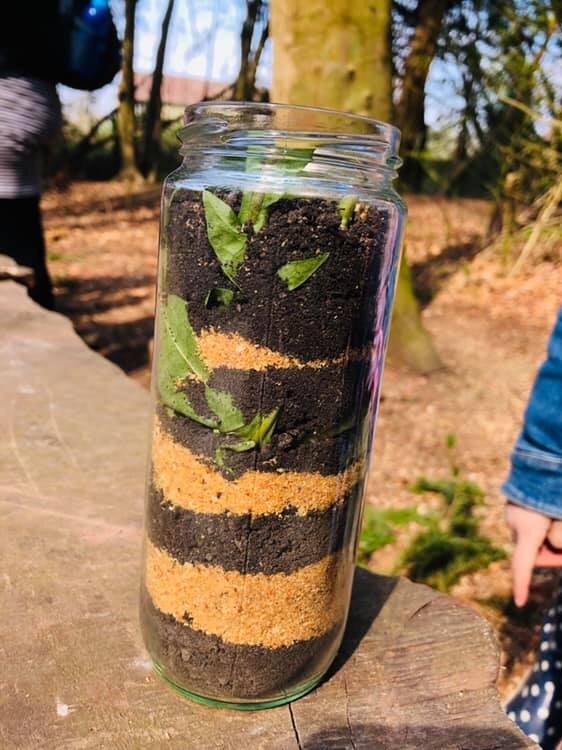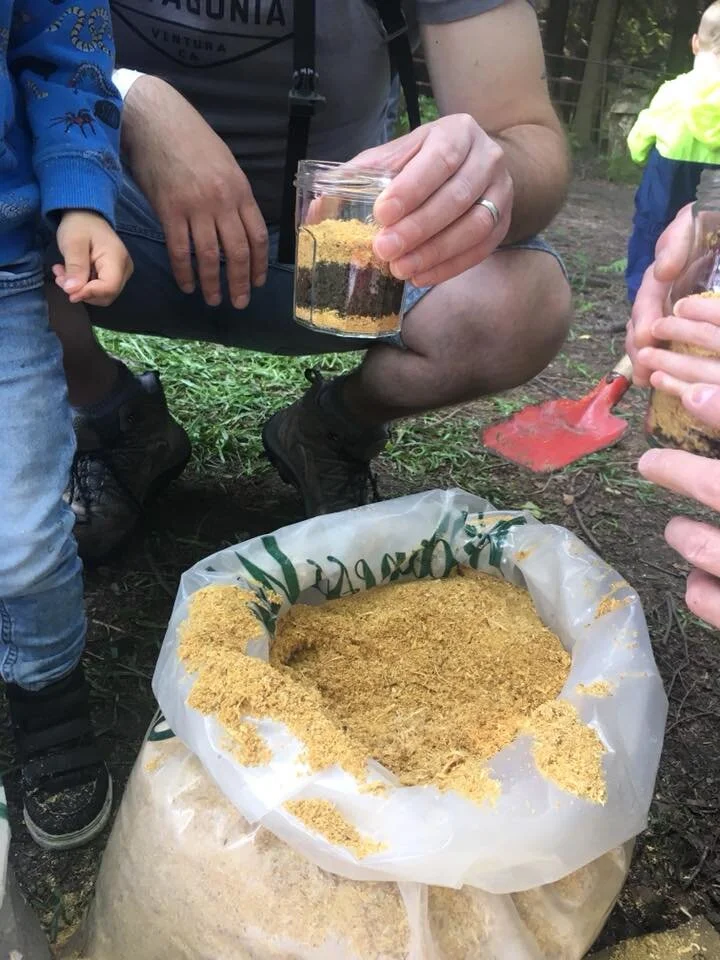Wormery
/Super Worm is super-long, Super Worm is super-strong, Watch his wiggle! See him Squirm! Hip, hip hooray for SUPERWORM!
One of our favourite Julia Donaldson books features an Earth Worm, but did you know all worms are superheros? They are 1000 times stronger than a human (relatively speaking), they can reproduce all on their own without a mate and even if you accidentally cut them in half they can go on living! You don’t, however, get two worms as the myth suggests. The part with the saddle (the fatter pink part) is the only half to survive.
The Earth Worm’s biggest superpower is their ability to make compost. They eat their body weight in dead organic matter everyday and then poop out beautiful soil! You might see these worm poos or casts in your garden.
You can observe a worm’s super composting powers if you make a Wormery.
All you need is a clean jar. You then layer up organic matter inside. In the woods we collect soil from Mole hills and layer with sawdust. We add in leaves, veggie peelings or over ripe fruit. You could use soil and sand, or even different colours of soil. The important thing is to create clear layers so you can observe the worms work. Keep these layers moist. Worms breath through their skin and need to be kept damp.
Its a little bit like making a worm lasagna!
Once you have made your ‘worm lasagna’ you need to make some worm ‘curtains’. We need to trick the worms into thinking they are deep underground. To do this you make a tube of black paper to slide over the jar. Don’t actually attach the tube to the jar as you will need to move it up and down to peak inside. You will also need a lid to stop the worms escaping! You can drill a few holes in the lid with a power drill. Alternatively cover the top of the jar with a piece of foil and pierce some holes in it.
You can drill a few holes in the lid.
Next you need to find a few worms to put in your Wormary. Did you know ‘Grunting’ or ‘Worm Charming’ is a sport in its own right? Contestants have to find as many worms as they can in an allotted area, in an allotted time. They can use many means to charm the worms out of the ground, but they are not allowed to dig.
Techniques include sending vibrations into the ground to try and raise the worms. You can do this by inserting a garden fork into the ground and twanging it or by dancing or drumming on the ground. Another trick is to water the grass with a watering can to get the worms to rise up. You can add things to the water as well, such as mustard powder or soap. Although these things won’t hurt the worms, they will irritate them enough to get them to surface.
Vibrations and secret potions can get the worms to surface.
Once you have found a few worms have a really good look at them. They have tiny hairs on their bodies that help them move about. You can see these through a magnifying glass. If you put the worm on a piece of paper you can hear the hairs scratching as they wriggle along. Then you can pop them into the Wormary so they can get to work! Keep checking the jar to see what they are up to and don’t forgot to release them after a week or so. Happy Grunting!












